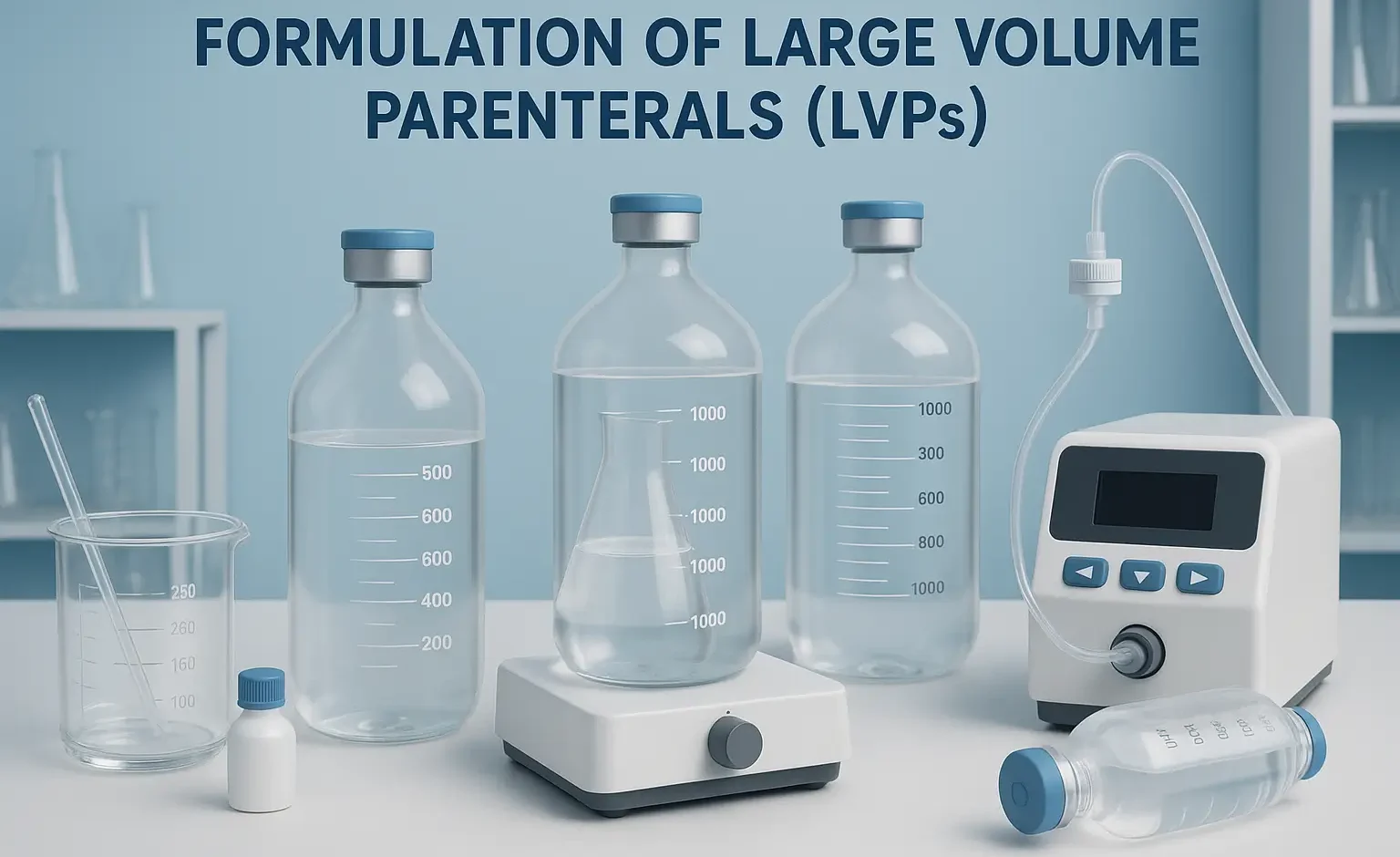- Formulation of Large Volume Parenterals (LVPs) involves sterile solutions over 100 mL, containing active drugs, solvents, and additives to ensure stability and isotonicity.
- Formulation of Large Volume Parenterals (LVPs) requires aseptic techniques, suitable containers, and strict quality control for safe intravenous administration
- LVPs are sterile solutions typically in volumes greater than 100 mL, used for intravenous administration.
- They serve as fluid replacements, nutrient solutions, or delivery systems for electrolytes and medications.
Key Considerations for Formulation of Large Volume Parenterals (LVP):
-
Sterility and Pyrogen-Free:
- LVPs must be free of microorganisms and pyrogens as they are administered directly into the bloodstream.
-
Isotonicity:
- LVPs are isotonic with blood to prevent hemolysis or irritation.
-
Stability:
- Requires careful selection of excipients to avoid precipitation or degradation.
Common LVP Formulation:
- Dextrose Solutions: Provide energy (e.g., 5
- Electrolyte Solutions: Restore electrolyte balance (e.g., Ringer’s lactate, sodium chloride solutions).
- Parenteral Nutrition: Mixtures of amino acids, lipids, vitamins, and minerals for patients unable to eat.
- Irrigation Solutions: For cleaning wounds or surgical sites.
Packaging and Administration:
- LVPs are typically packaged in flexible plastic bags or glass bottles.
- Administered using an IV infusion set to control flow rate.
Advertisements

